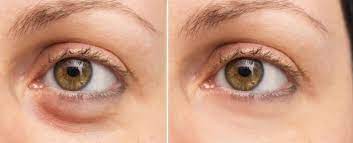Crepey skin under the eyes is a common concern, and there are several approaches you can take to address it. Keep in mind that consistency is key, and results may vary from person to person. Here are some tips to help improve crepey skin under the eyes:
- Hydration: Proper hydration is crucial for maintaining skin elasticity. Drink an adequate amount of water throughout the day to keep your skin hydrated from the inside out.
- Moisturize: Use a hydrating eye cream containing ingredients like hyaluronic acid, glycerin, or ceramides. Apply the eye cream both in the morning and at night to keep the under-eye area moisturized.
- Sun Protection: Protect your skin from UV rays by using a broad-spectrum sunscreen with SPF 30 or higher. Sun damage can contribute to premature aging and the development of crepey skin.
- Retinoids: Retinoids, such as retinol, can stimulate collagen production and promote skin renewal. However, it’s essential to start with a lower concentration and gradually increase to avoid irritation. Consult with a dermatologist before incorporating retinoids into your skincare routine.
- Antioxidants: Look for eye creams or serums containing antioxidants like vitamin C and E. These can help protect the skin from free radical damage and support collagen production.
- Gentle Cleansing: Use a mild, hydrating cleanser to clean the under-eye area. Harsh cleansers can strip the skin of natural oils and contribute to dryness.
- Eye Masks and Cold Compresses: Consider using hydrating eye masks or applying a cold compress to the under-eye area to reduce puffiness and temporarily tighten the skin.
- Diet and Supplements: Consume a balanced diet rich in fruits, vegetables, and omega-3 fatty acids. Consider supplements like fish oil, which may support skin health.
- Stay Hydrated and Maintain a Healthy Lifestyle: Avoid smoking and excessive alcohol consumption, as these can contribute to premature aging. Get enough sleep and manage stress to promote overall skin health.
- Medical Treatments: In some cases, medical treatments such as laser therapy, chemical peels, or injectable fillers may be recommended. Consult with a dermatologist or skincare professional to discuss these options.
It’s essential to be patient and consistent with your skincare routine, as improvements in skin texture may take time. If you have specific concerns or conditions, consulting with a dermatologist can provide personalized advice and treatment options tailored to your needs.

